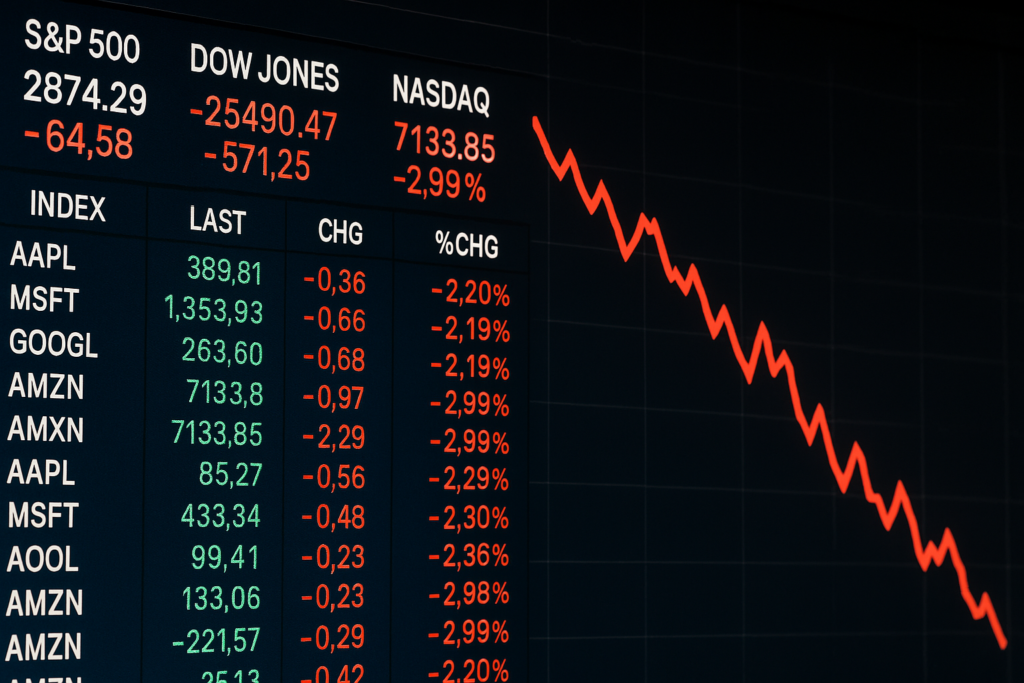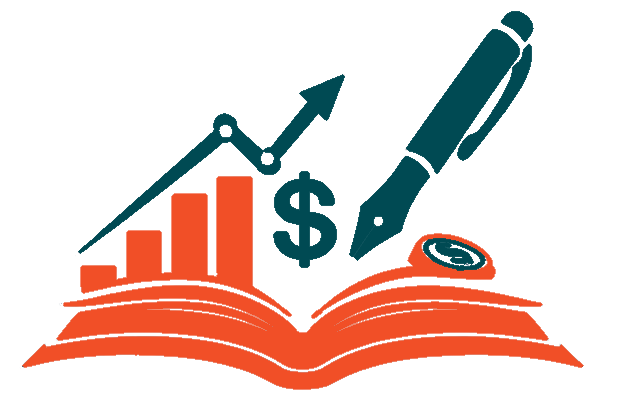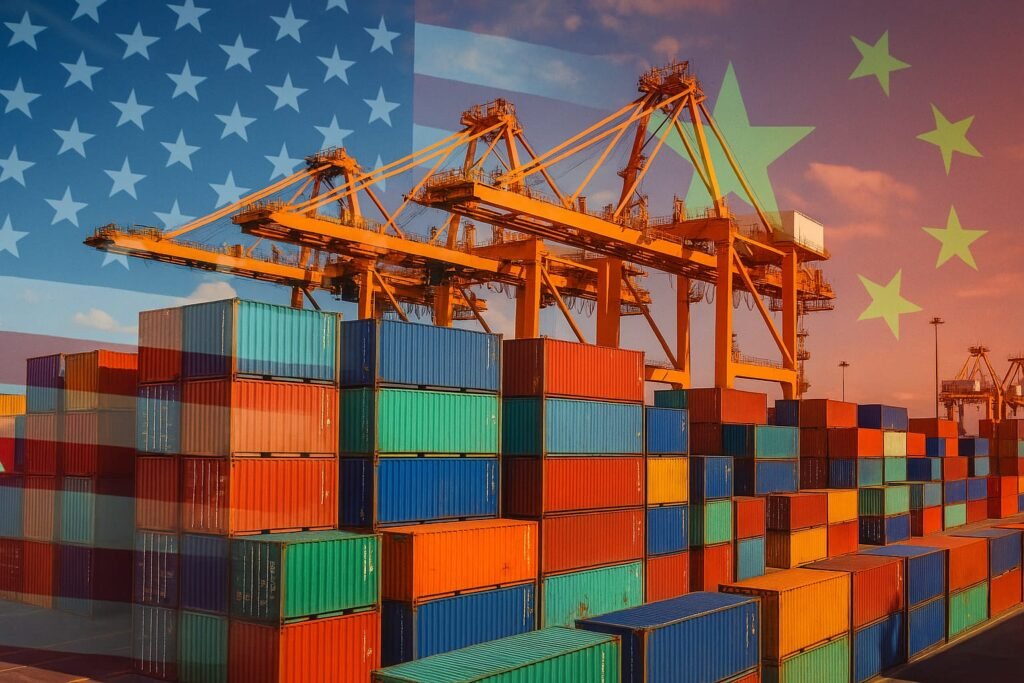Hi there! You’ve probably heard about the growing China-US tariff war, a story that is upending economies all across the world, if you’ve been following world news. China just dropped a bombshell on April 11, 2025, when it announced that it would impose a 125% tariff on US imports starting on April 12, 2025. Following the United States’ own tariff hikes, this audacious action has analysts and markets aglow. What is happening, then, and why should you be concerned? Let’s examine the effects of this trade battle in real time and break it down in a way that feels personal rather than academic.
Missed our last post on global trade tensions? Check here
What’s the Deal with the China-US Tariff War?
Imagine the United States and China, two economic superpowers, engaged in a high-stakes battle. Their preferred tool for protecting domestic sectors or influencing trade policies is a tariff, which is a charge on imported goods. However, when both parties continue to increase the pressure, it’s not just about them; it’s also about the repercussions that will affect markets, companies, and customers worldwide.

Citing trade imbalances and problems like fentanyl smuggling, the US has recently imposed duties on Chinese goods that can reach 145% in certain situations. China retaliated with a 125% levy on US imports, not to be outdone. A trade war that has been simmering for years is now at a full boil, and this back and forth is just the most recent episode in it.
Why Did China Impose a 125% Tariff?
What is the reason behind China’s significant tariff increase, then? It’s a calculated jab, not simply a random one. The scoop is as follows:
Tit-for-Tat In retaliation, the US recently increased duties on Chinese imports, imposing a 20% fentanyl-related duty in addition to a reciprocal tariff of 125%. How will China react? To match the intensity and demonstrate their seriousness, they imposed a high 125% charge.
Boosting Local Industries: China is allowing its own businesses, such as those in technology, automotive, and agricultural, to flourish by raising the price of US goods.
Making a Point: China has referred to the US tariff policy as a “joke” that is contrary to sound economic principles. This action makes it very evident that “we’re not backing down.”
It’s a mix of economics and pride, with both sides vying for the upper hand.
Real-Time Impact of the 2025 Tariff War
This isn’t just talk—it’s already shaking things up. Here’s what’s going down as of April 11, 2025:
- Markets Are Uneasy: Following China’s tariff announcement, European market indexes fell into negative territory. Investors worry that increased tariffs will reduce demand, drive up costs, and reduce company earnings.
- Price Increases on the Horizon: Chinese imports into the US may become more expensive for everything from cellphones to apparel. On the other hand, the 125% tax may make US products, such as vehicles or soybeans, almost luxury goods in China.
- Businesses Are Changing: Some are reconsidering supply chains, while others, like Micron, are imposing tariff-related levies. To avoid US tariffs, some Chinese companies are even looking into building factories elsewhere.
- Analysts are raising alarms after growth forecasts were cut. For example, Citi lowered its estimate of China’s GDP in 2025 from 4.7% to 4.2%, citing rising trade tensions as the reason.
These shifts are reshaping global trade faster than you can say “supply chain.”

How Did We Get Here? A Quick Timeline
Let’s hit rewind to see how we landed in this mess:
- Early 2025: In order to address trade deficits and fentanyl worries, the US, under President Trump, increases tariffs on China, beginning with a 34% increase on top of current charges.
- On April 9, 2025, the US imposes a 125% tariff on Chinese exports, raising the total tariff for some categories to 145% after previous levies.
- 10 April 2025: China signals that they are prepared to fight back by imposing an 84% tax on US imports.
- April 11, 2025: China accuses the US of engaging in a “numbers game” devoid of economic reasoning and raises tariffs to 125%, which take effect on April 12.
It’s been a wild week, and the world’s on edge waiting for the next move.
Can This Trade War Be Resolved?
Does this mean that there is hope for the future? Despite the fact that both parties are digging in their heels, trade battles frequently result in negotiations. While China’s President Xi Jinping maintains that there are “no winners” in a tariff war, Trump has made references to seeking a “fair deal.” There may be conversations, but don’t count on a speedy resolution. Governments are considering subsidies, companies are diversifying their suppliers, and markets are preparing for the effects. Although it’s a difficult journey, history demonstrates that calmer heads can win out.

Conclusion: Navigating the New Normal
With China imposing a 125% tax on US goods and the US imposing a 145% tariff on Chinese imports, the 2025 China-US tariff war is a high-stakes battle that will change the norms of international commerce. Businesses are adjusting, markets are trembling, and the economic consequences are only getting started. This conflict serves as a reminder of how interconnected our society is and how swiftly things can change, whether it be through increased pricing or changes to the supply chain. Let’s see where this rollercoaster takes us, so be inquisitive and watch the news.
How do you feel about this trade war? Have you already seen any changes in your world? Please leave a comment below; I’d be interested in knowing what you think! Share this post with a friend if it clarified anything for you. Together, let’s continue to analyse these significant events.


